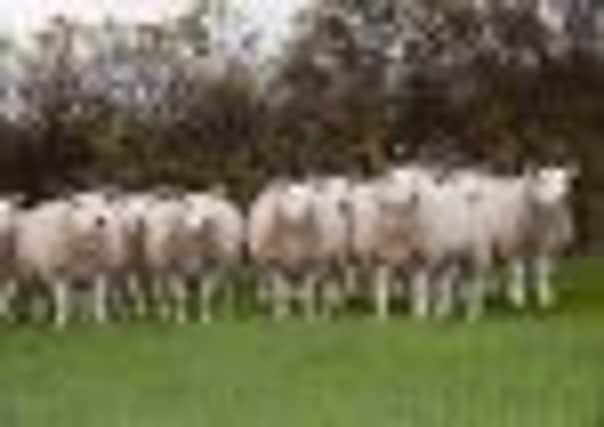Records get behind better Beltex


Mr Findlay, of Coverham, Leyburn, was mightily impressed by the first Beltex he ever saw, at Harper Adams College in 1990.
He bought into the next consignment to be imported from Belgium and started developing the British flock.
Advertisement
Hide AdAdvertisement
Hide AdAs a member of the breed society council, he was at Askham Bryan this week to announce the roll-out of a performance-recording system developed in collaboration with the Scottish Agricultural College and the experts in the field from Signet, the database service run by EBLEX.
Most of the terminal sire breeds are already well into computer analysis to identify the ram lines which pay best in terms of lambs fathered and their rate of growth. The Beltex Society held back because standard measures would have undervalued the hidden strength of the Beltex – its meaty hindquarters. But the spread of hospital-style CAT scanners made it possible to develop a system including a fat-v-lean analysis and the size of the big muscle at the top of the traditional “leg of lamb”.
About 14 breeders, mainly in Scotland, took part in the pilot programme from 2008 and some of their best ram lambs are coming through for sale now. At Askham Bryan on Wednesday, Mr Findlay said the system was now ready for all breeders to use and he would be taking it up immediately.
Then he sat back to hear Alison Glasgow, from EBLEX, analyse figures coming out of the pilot study. As he hoped, they confirmed that it was possible to improve the growth rate of Beltex offspring, to make them more obviously competitive, without losing their distinctive muscling. Dr Glasgow confirmed: “You can pick Beltexes that grow as good as Texels – the genetics are there.
Advertisement
Hide AdAdvertisement
Hide AdThen Ian Snowden, agricultural projects manager for Askham Bryan, reported on his results from buying in some of the first performance-recorded Beltex tups and using them on Texel-Mule-cross ewes on the college farm. On the face of it, the lambs grew slower than two other lines – from Meatlincs on Mules and Texels on Mules. But a higher proportion of their liveweight was good meat. And many more of them were in the top grades on the EUROP scale. And those virtues more than made up for the shortfall in liveweight, he summed up.
BUTCHERS IN THE KNOW
BUTCHERS already know what the Askham Bryan figures confirmed, according to David Findlay.
He uses his pedigree sires to produce butchers‘ lambs and sells them live at Skipton, to show off the Beltex benefits. On Monday this week, he said, they averaged 37p a kilo more than all rival crosses because the buyers knew the value waiting under the skin.
He said: “I am thrilled to bits with today’s figures. They add up to £2 or £3 a lamb for doing nothing different. We are expecting to find new interest from big lamb producers, selling deadweight, and looking for maximum kilos per acre in the fastest possible time.”